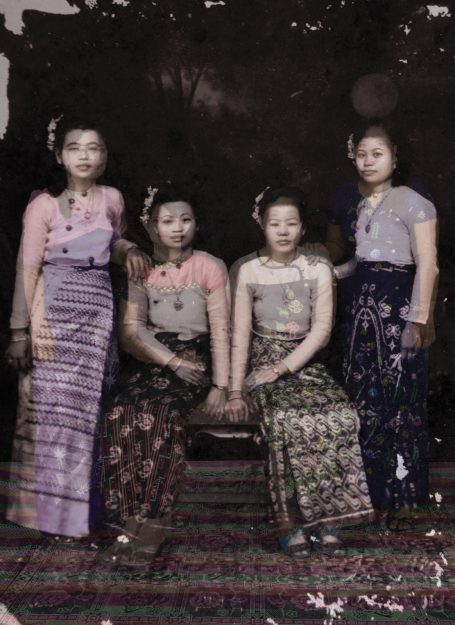Artist Nge Lay has seen Myanmar (formerly Burma) go through rapid, often tumultuous, changes. Born in 1979, Nge Lay was just a child when a 1988 pro-democracy uprising was violently repressed by the military regime.
In the decades since, the country has continued to experience harsh crackdowns while also opening up its borders to new markets and cultures.
Nge Lay has dedicated herself to capturing Myanmar’s changing society through her photography, performances, sculptures, and installations. In Endless Story and Urban Story, two ongoing series started in 2012 (selections of which appear in these pages), Nge Lay combines photographs of early 20th-century Myanmar with portraits she staged to echo the original.
On February 1, 2021, a military coup threw the country back into the dark days of junta rule.
From their home in Myanmar, Nge Lay and her family have endured Internet blackouts and nightly fears as security forces raid neighborhoods trying to arrest protesters. Despite the conflict, she took the time in March to answer questions from Tricycle about the dramatic changes taking place in Myanmar.


Many of the protests have been quite creative, using art, dance and satirical slogans as a form of expression/resistance. Are you inspired by what you see? The early stages of the revolution were quite creative, and all people went out. All the roads downtown and in front of embassies and the United Nations office were too crowded to march in, with demands for democracy, to free Aung San Suu Kyi, our president, Win Myint, and other people who were arrested. People created lots of new slogans and new forms of demonstration. But now the focus is more on each ward defending itself and trying to stop those who come and shoot tear gas and guns [at night]. I cannot create my own artwork right now, but I move forward because this time is more important than creating artwork.

What do you think about the role of the artist in these times in Myanmar? The artist is not superman. We are the same as other people. So most of the artists do not stop supporting this movement and do as much as we can.
“The artist is not Superman. Most of the artists do not stop supporting this movement and do as much as we can.”
It has been a challenging year for Myanmar even before the coup. How did you spend time in lockdown? Did it fuel your creativity or did you find it difficult to be creative? We faced challenges since the COVID pandemic, the whole year of 2020 and up through the February 1 coup. Because art is not so popular in Myanmar, mostly we depend on international collectors and museums. During the pandemic, the economy was down and that stopped most of the support from abroad. So we have had no income the whole year. Some galleries tried to support us, but they also had difficulty surviving and there was not enough for us.
Could you talk a little bit about how your work, especially the Endless Story series, is an expression of Myanmar culture and identity? I’m interested in collecting historic photographs. Old photos can tell us our past situations, including culture, identity, and all. The Endless Story series is one of my ongoing photography projects, and I’ll create it in another country if I get a chance. It will go on in Myanmar as well.

